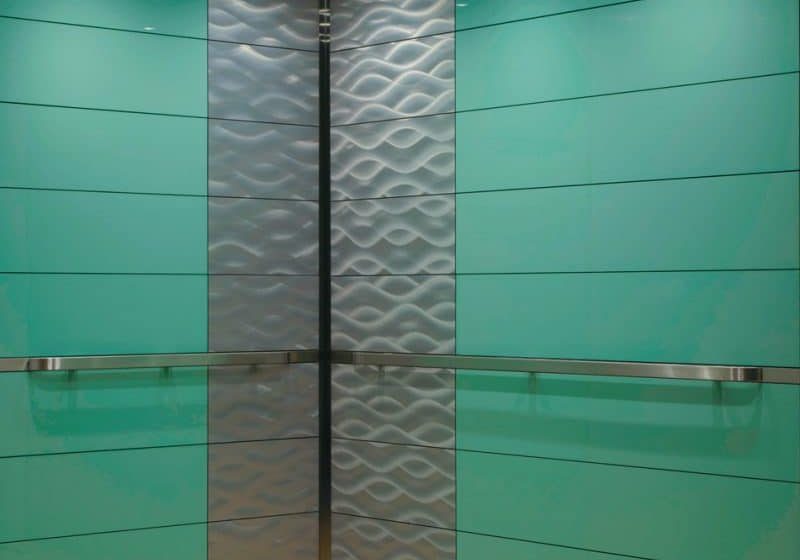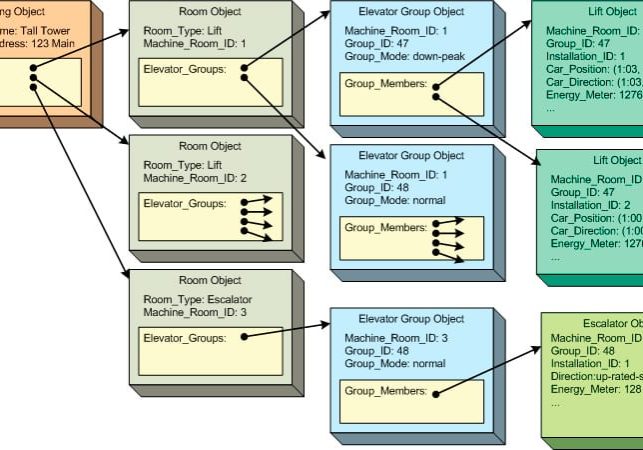ThyssenKrupp Elevadores outfits Brazilian stadiums, airports for FIFA World Cup.
photos by Juá Pita/Divulgação (Brasilia) and Stephane Senne (Guarulhos)
The roar of Fédération Internationale de Football Association (FIFA) World Cup attendees has faded, but the buzz about results and individual performances — such as Dutch striker Robin Van Persie’s amazing head-shot goal — will resonate for a long time among millions of soccer fans around the world and particularly in Brazil, where the tournament took place from June 12- July 13.
Brazilians prepared venues with great effort and huge investment to put on the best of shows. Infrastructure to support and accommodate an influx of event organizers, as well as countless spectators, played a fundamental role. With 68 elevators in four World Cup stadiums, ThyssenKrupp Elevadores was a big part of it. The company installed 23 units in Beira-Rio Stadium in Porto Alegre, 18 in Arena da Baixada in Curitiba, 15 in Castelão Arena in Fortaleza and 12 in Pantanal Arena in Cuiabá.
Airports also prepared to receive and transport thousands of additional visitors. Here, ThyssenKrupp Elevadores played an even bigger role, installing 279 pieces of equipment at airports that were refurbished, enlarged or built for the event. Equipment included elevators, escalators, moving walks and passenger boarding bridges, which were essential to transport the estimated 1.9 million visitors who came to Brazil for the World Cup.
All installations feature energy-saving technology and modern design that harmonizes with the new terminals. The elevators were manufactured at ThyssenKrupp Elevadores´ factory in Guaíba, Rio Grande do Sul. The panoramic elevators installed in the Brasilia International Airport are noteworthy due to their 34-passenger capacity. Escalators and moving walks were imported from ThyssenKrupp facilities in Spain and China.
iWalk moving walks (ELEVATOR WORLD, May 2011) were installed in the Brasilia (BSB) and São Paulo Guarulhos International (GRU) airports. The iWalks are 72-m long, placing them among the longest operating moving walks in the country. Since they run at 0.5 mps, passengers need only 1-1/2 min. to reach the boarding gate from check-in. A “green” product that reduces power consumption, the equipment features a ThyssenKrupp energy-control system that remains in standby mode when not in use. Speed increases only when a rider treads on the iWalk.
iWalk boasts features such as a significantly reduced combplate of 7 mm. (A standard combplate is 40 mm.) This provides an easier walk and safer passage between fixed and mobile sections for passengers pulling wheeled items over the combs. Its optimized drive system was designed to minimize the need for oil lubrication and reduce the number of components. Additionally, the system’s division into modules makes manufacture and installation easier and more flexible.
Passenger boarding bridges were produced in Spain by ThyssenKrupp. At GRU, the company installed five custom bridges capable of serving the biggest commercial aircraft in the world, the Airbus A380. Esteban Marco, ThyssenKrupp Special Jobs director, commented: “The sophisticated technology used in these jobs adds value to the projects. It is the same featured in installations located in major airports [throughout] the world.”
Installations included:
- Eighty-two machine-room-less Synergy elevators, featuring gearless machines in the hoistway. These high-performing units do not need oil during maintenance, which contributes to a cleaner environment. Thirteen elevators are panoramic.
- Seventy reinforced Velino escalators, a new generation of equipment designed to serve venues with heavy, consistent traffic, such as airports. Built with strong materials, they last long and save energy due to technology that stops the units when not in use. Each has 9,000-person-per-hr. capacity and 0.5-mps speed.
- Fourty-four Orinoco and iWalk moving walks, designed to quickly move passengers as they board, disembark and move between terminals.
- Eighty-three Apron-Drive passenger boarding bridges. These have been installed by ThyssenKrupp in Frankfurt and Munich, Germany; Zürich, Switzerland; Paris; Moscow; Madrid; London; Los Angeles; San Francisco; Chicago; New York Ciy; Miami; Toronto; Shanghai; and Hong Kong. They consist of a cabin that connects the bridge with the aircraft, a rotunda joining the bridge to boarding terminal, a passageway built of metal or glass with sections that slide inside one another according to need, a hydraulic lifting system located close to the aircraft that allows for vertical movement of the bridge, two wheels with independent mechanisms to move the bridge on the landing platform and a service ladder that allows access to the bridge from the terminal.
- Work was performed at the following locations:
- Brasilia International Airport (BSB), Brasilia Federal District: 19 elevators, nine escalators, 14 iWalks and 20 boarding bridges for the new domestic-flight South Pier and enlargement and refurbishment of the North Pier. BSB’s capacity is roughly 21 million passengers per year.
- GRU, São Paulo: 21 escalators, 30 moving walks and 20 boarding bridges for new passenger terminal TP3. GRU has a capacity of 12 million passengers per year.
- Tancredo Neves International Airport, Confins, Minas Gerais: 17 elevators, 10 escalators and nine boarding bridges for the existing Terminal 1 and the new Terminal 3. The airport has an annual capacity of 15.5 million passengers.
- Brigadeiro Eduardo Gomes International Airport, Manaus, Amazonas: 24 elevators, 14 escalators and eight boarding bridges, enabling the airport to handle 13.5 million passengers per year.
- São Gonçalo do Amarante International Airport, Natal, Rio Grande do Norte: 22 elevators, eight escalators and eight boarding bridges. Able to handle 6.2 million passengers per year, the facility was built with private investment especially for the World Cup.
- Fortaleza International Airport, Pinto Martins, Ceará: nine boarding bridges that help bring the airport to a 6.9-million-passenger-per-year capacity.
- Afonso Pena International Airport, Curitiba, Paraná: eight escalators and eight boarding bridges, helping the facility handle 7.9 million passengers per year.
- Marechal Rondon Airport, Cuiabá, Mato Grosso: one passenger boarding bridge, helping bring capacity to 5.7 million passengers per year.
Brazil’s infrastructure is now prepared to host the 2016 Summer Olympics in Rio de Janeiro.
Acknowledgement
The author wishes to express special thanks to Isabel Silvares, journalist.
Get more of Elevator World. Sign up for our free e-newsletter.










